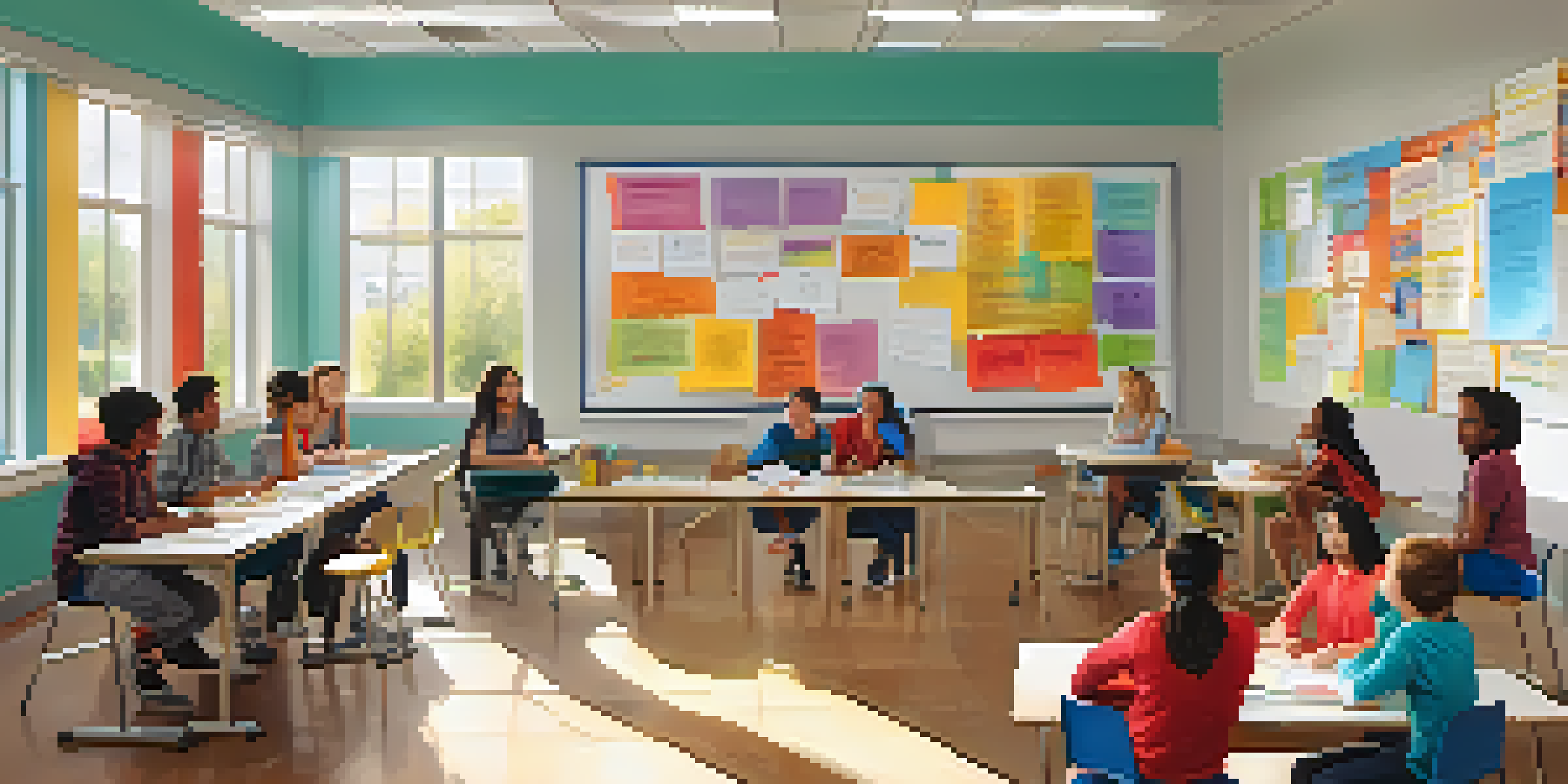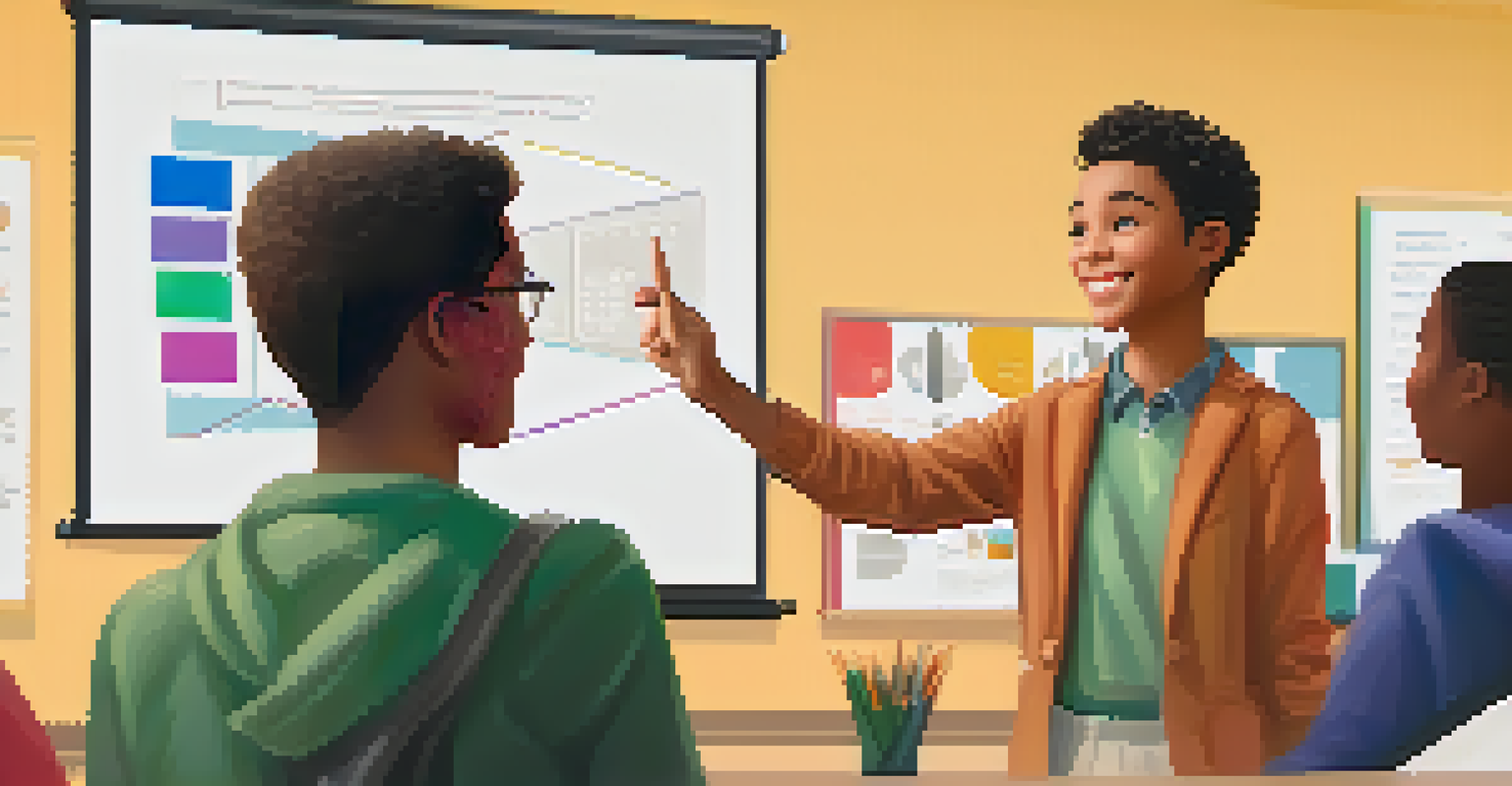Flipped Classroom: Enhancing Communication Skills in Class

Understanding the Flipped Classroom Model
The flipped classroom model is a teaching approach that reverses traditional learning. Instead of introducing new material in class, students engage with instructional content at home, freeing up classroom time for collaborative activities. This shift allows educators to act as facilitators, guiding students as they delve deeper into subjects during face-to-face interactions.
In a flipped classroom, students learn to communicate effectively, fostering a collaborative environment where every voice matters.
In this model, students often watch video lectures or read materials before class. This pre-class engagement ensures that when they arrive, they are equipped with foundational knowledge, ready to tackle more complex concepts. It’s like preparing a delicious meal: the ingredients must be prepped before you can whip up something fantastic together.
By flipping the classroom, educators create an environment that fosters active learning and communication. Students are encouraged to discuss concepts with their peers and teachers, promoting a dynamic exchange of ideas that enhances their verbal skills.
How Flipping Classroom Enhances Communication Skills
One of the most significant benefits of the flipped classroom is its emphasis on communication. In a traditional setting, students often passively absorb information, reducing opportunities for dialogue. However, in the flipped model, they participate in discussions, ask questions, and express their thoughts, which cultivates critical communication skills.

Collaborative projects and group discussions become an integral part of the classroom experience. These activities not only allow students to articulate their ideas but also teach them to listen and respond to others. It’s akin to a dance; both partners must communicate effectively to create a beautiful performance.
Enhanced Communication Skills
The flipped classroom model fosters active participation, allowing students to engage in discussions that improve their communication abilities.
Moreover, as students explain concepts to their peers, they reinforce their understanding while building confidence in their communication abilities. This peer-to-peer interaction is invaluable, as it often leads to deeper insights and encourages a culture of support and teamwork.
Fostering Active Participation Among Students
Active participation is a cornerstone of the flipped classroom. When students arrive prepared, they can dive straight into discussions and activities that require their input. This engagement transforms the classroom from a lecture hall into a vibrant forum for ideas, where every voice matters.
Communication is the key to unlocking understanding; it transforms passive learning into active engagement.
Teachers can facilitate this involvement by designing activities that require collaboration and problem-solving. For instance, students might work in small groups to solve a case study, encouraging them to express their thoughts and negotiate solutions together. This collaborative approach helps build communication skills in real-world contexts.
Additionally, the flipped model reduces the fear of speaking up. Since students have already encountered the material, they are more confident in sharing their perspectives. This empowerment fosters an environment where everyone feels valued and encouraged to contribute.
Building Confidence Through Peer Interaction
Confidence is key when it comes to effective communication, and the flipped classroom provides a safe space for students to grow. By engaging in discussions with their peers, students can practice articulating their ideas without the pressure of formal assessments. This practice helps them become more comfortable and effective communicators.
Instructors can further boost this confidence by providing constructive feedback during group activities. Positive reinforcement encourages students to take risks in their communication, knowing that mistakes are part of the learning process. It's much like learning to ride a bike; the more you practice, the steadier you become.
Boosted Confidence in Speaking
Peer interactions in a flipped classroom create a safe space for students to practice articulating their ideas, thereby building their confidence.
As students gain confidence, they often become more willing to speak in larger groups or even public settings. This growth translates beyond the classroom, equipping them with skills that will serve them well in their future careers.
Encouraging Critical Thinking and Articulation
In the flipped classroom, students are not just passive listeners; they are active thinkers. This model encourages them to critically analyze information and articulate their thoughts effectively. As they prepare for class, they must evaluate what they’ve learned and consider how to express it.
This critical thinking process is essential for effective communication. When students learn to articulate their analysis and opinions, they develop a more profound understanding of the material. It’s similar to a sculptor chiseling away at marble; each thought becomes clearer and more defined.
Teachers can facilitate this by asking open-ended questions that require students to think deeply and discuss their viewpoints. Such questions stimulate dialogue and encourage students to consider multiple perspectives, further refining their communication skills.
Creating a Supportive Learning Environment
A supportive learning environment is crucial for developing communication skills. The flipped classroom promotes a sense of community where students feel safe to express their ideas and opinions. This environment encourages open dialogue and collaboration, essential components of effective communication.
Teachers can foster this supportive atmosphere by setting clear expectations for respectful communication. Activities that emphasize teamwork and mutual respect can help students feel more comfortable sharing their thoughts. Think of it as building a bridge; the stronger the foundation, the more traffic it can support.
Active Learning Encourages Critical Thinking
Students in a flipped classroom not only absorb information but critically analyze and articulate their thoughts, enhancing their understanding.
When students know their contributions are valued, they are more likely to engage actively. This sense of belonging not only enhances their communication skills but also contributes to their overall academic success.
Measuring the Success of Communication Skills Development
Assessing the effectiveness of the flipped classroom on communication skills can be challenging but essential. Educators can use various methods to gauge improvement, such as peer assessments, self-reflections, and class discussions. These tools provide valuable insights into students' growth in articulating their thoughts.
Another effective approach is to have students present their knowledge through projects or discussions. This not only tests their understanding but also showcases their communication abilities in real-time. It’s like a performance; the more they practice, the better they get.

By regularly evaluating these skills, teachers can adjust their teaching strategies to better support students. Continuous feedback helps students recognize their progress and areas for improvement, ultimately enhancing their communication skills.